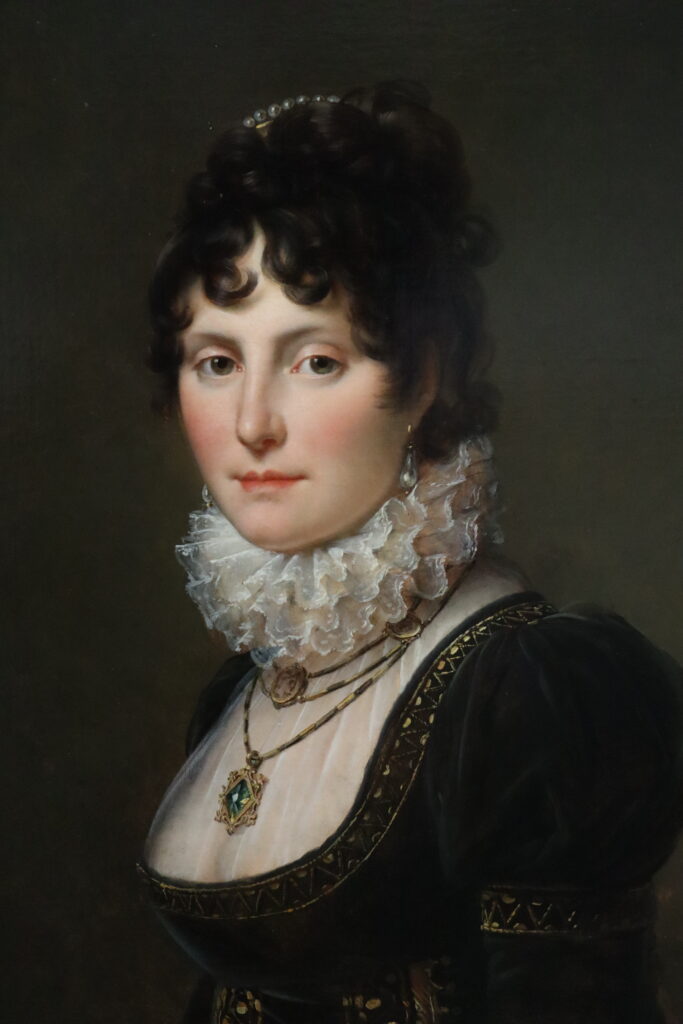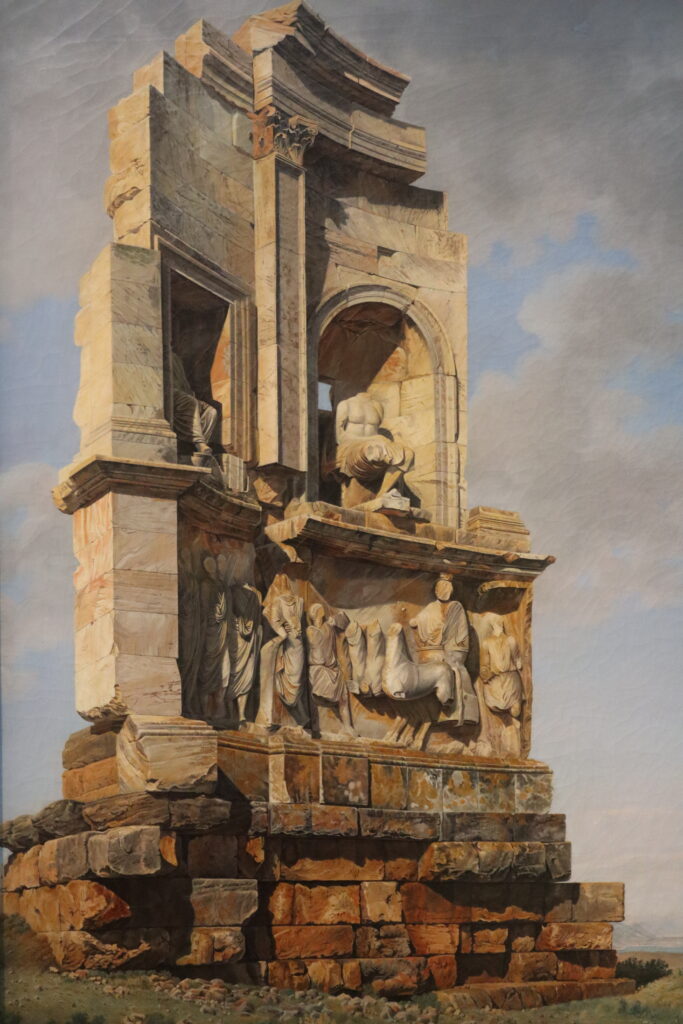A Portrait
The collection on display at the National Gallery of Scotland in Edinburgh, Scotland is like a treasure trove of things that were and which very likely are still with us. Take for example, what is referred to in the United Kingdom as the ‘Elgin Marbles’. For being constantly in the limelight of international tension, even though the word Elgin has an obvious Scottish link, the war of words about the rightful ownership of the marbles had always been quintessentially English with major players at times the Prime Minister and the head of the British Museum.
The Countess of Elgin, Mary Nesbit, was painted in Paris by Baron Francois Gerard around 1802 when Thomas Bruce, 7th Earl of Elgin and his wife were detained following the failure of the Peace of Amiens. The couple had married in 1799. As a well constructed portrait, it communicates the sharp intellect of a focused mind. Baron Francois Gerard was at that time the eminent court painter of Napoleon. Thomas Bruce, however, would divorce his wife in 1808 on account of her infidelity and the expense of this would be a considerable complication to his exploits to secure safe harbour for ‘his’ marbles.

(What jewels are these?)
A Monument
The painting below of the Monument to Philopappos, Athens by Giovanni Battista Lusieri cira 1806, records the structure in near photographic detail. This is a Roman monument dating from around 115 AD. It is a unique painting in the National Gallery of Scotland Exhibition. Lusieri spent 20 years in Athens as the artist and agent of Thomas Bruce, the 7th Earl of Elgin. He was also closely involved in supervising the removal and transport to Britain of the famous marbles from the Parthenon, beginning working for the Earl of Elgin from around 1799 at a time when Athens was under the rule of the Ottoman Empire.

While facing increasing difficulties accessing the Parthenon to record the antiquities and with bribes becoming difficult to sustain, the Earl of Elgin asked the Sultan for clarification of what could be done. The Earl of Elgin interpreted the response, perhaps slightly more broadly than intended and proceeded to speedily remove the priceless items. In Elgin’s favour, however, it transpired that carved limestone fragments were being converted to lime for agricultural purposes from the site and all its contents were under risk. The Parthenon, in the eyes of the Ottoman rulers was, after all, the ‘temple of the idols’. Throughout the process of crowbarring the marbles from their natural home, we can imagine Lusieri frantically calling to the hired hands to be careful in their deliberations. Numerous plaster casts were made of of the sculptures at the time of their removal. Where are they now? Another question – what did Lusieri record in his watercolours of the events at the Parthenon?
There is actually a watercolour by Giovanni Battista Lusieri of title ‘South-East Corner of the Parthenon, Athens 1803 Watercolor on paper’ which is in the National Gallery of Scotland collection. The image displays essentially a ruined building with tumbling blocks of masonry in the foreground. It is recorded, however, that a collection of watercolours by Lusieri were lost in a shipwreck in 1828, though this is an interesting trail to follow.
Thus these two paintings, fresh in their appearance as the day they were painted, take us on an epic march back in time.